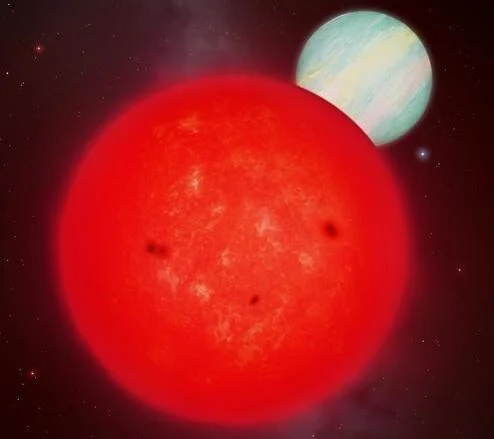In a discovery that’s rewriting the cosmic rulebook, astronomers have found a giant gas planet orbiting an unusually small red dwarf star, a pairing once thought nearly impossible.
The host star, TOI-6894, is a faint, low-mass red dwarf, just 20% the mass of our Sun. Traditionally, scientists believed such stars lacked the raw material to form massive planets. But that assumption just got shattered.
Using data from NASA’s TESS satellite, an international team spotted a planet—now named TOI-6894b—with a radius slightly larger than Saturn, yet only half its mass. Even more shocking: it orbits its star every 3.36 days, a tight, blazing loop that shouldn’t exist under current theories.
The discovery, published in Nature Astronomy, was later confirmed by ground-based telescopes, including Chile’s Very Large Telescope (VLT).
“This star is incredibly small—most thought it couldn’t host a gas giant,” said Professor Daniel Bayliss of the University of Warwick. “We may have to rethink how many gas giants are actually out there.”
There are two main ideas about how such planets form: core accretion, which involves gradual buildup in a gas-rich disk; and gravitational instability, where the disk collapses under its own gravity. But neither theory fully explains how TOI-6894b formed.
The planet’s cool atmosphere, at just 420 Kelvin (147°C)—much colder than typical “hot Jupiters”—makes it even more intriguing. Early observations suggest its air may be rich in methane.
Researchers plan to probe the atmosphere further using the James Webb Space Telescope in the coming year. Its chemical fingerprint could unveil clues about the planet’s origin, structure, and evolution.
As we find more systems unlike our own, one thing becomes clear: the universe still has plenty of surprises.


